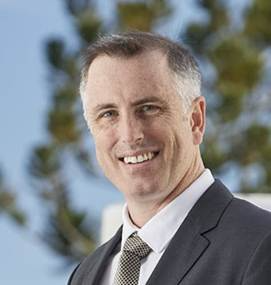by Michel Hogan and David Finn
Ever wondered how, despite the best intentions of everyone involved, promises get broken? You thought the detail was nailed. Everyone was working hard to make it happen. Then bit by bit, things unravelled, and time ran out. What went wrong? What unpredictable forces undermined your intentions?
Companies make plenty of promises, from quick, easy-to-adjust agreements to consequential commitments, where changing them is hard, if not impossible, without serious, widespread consequences. And any kind of promise can be complicated or complex to keep. So, how are those different, and why does it matter?
Take a car. It has lots of parts that must be assembled in the right order to keep the promise of a car that starts at the press of a button. Assuming you have all the parts, it’s assembly is a predictable process. Sure, while it’s a complicated promise with lots of steps, you’re in control, which makes it easier to keep.
A promise becomes complex when elements become intermingled, sticky to tease apart, and marked by uncertainty. For example, assembling one million cars to different specifications, delivered to customers around the globe. Even completing all the required steps for each car, chances are external, unpredictable forces will affect some aspect of the promise before you’re done.
Likely more than a few of your organisation’s promises are complex. Leaders, especially, project intended paths into an unknown future, across uncharted terrain with untested partners. Which all present risks people must navigate as threats and opportunities within processes and projects. Meaning everyone, regardless of their role, must manage those risks for the organisation to keep its promises.
It’s a tough spot. You’ve got to make complex promises as part of doing business. And their nature almost guarantees you’ll end up breaking some of them. So, while there’s no option but to accept that unpredictable forces shape what happens. Help for keeping those promises is available from an unexpected source—risk management.
Simply defined, risk management is a process for identifying, assessing, and addressing threats or opportunities that would affect your plans or those of others. Often thought mundane and unnecessary for all but the most critical activities, what gets overlooked is how risk management can help prepare for and deliver complex promises.
Complex promises are often hard to pin down, often having fuzzy goals and murky start points. Here’s where risk management delivers a surprising benefit. Creating ‘space’ so the team can clarify the path to keeping a promise, where it starts and ends, and agreeing on the capabilities they’ll need along the way.
Making time to consider and address team members’ concerns and ideas while imagining threats and opportunities turbocharges their alignment around the desired outcome. The resulting alignment is worth the effort, boosting the team’s confidence in achieving the goals achieved by 5 times.*
However, activities rarely unfold as expected. Opportunity may find momentum, and despite efforts to mitigate a threat, it sometimes becomes real. Both outcomes can drive changes to promises during delivery. But any changes will likely ripple, affecting others. So, shouldn’t they also be consulted? Yes, of course they should. And allowing for who or what those things may affect is a powerful decision-making tool.
Still project and team leaders too often miss the potential payoff. They might ignore the risk occurrence in hope they can avoid renegotiating those promises. Resign themselves to breaking the promise because there was no choice. Stall deciding on changes by consulting too widely, or completely miss that others are affected.
Those examples make it easy to see how complex promises can strangle activity and why keeping on top of them matters.
The risk management process helps identify what’s intended by teasing out assumed conditions, inputs, boundaries, outcomes, team capabilities, and limits. Borrowing a popular project acronym, you could call the resulting complex promises ‘SMART’ (specific, measurable, assignable, realistic, and time-bound).
The reasons for using risk management as a tool, to help you make and keep complex promises, are not trivial matters. Because the more you keep, the more social capital you build. Success creates confidence within the organisation and across stakeholders and motivates teams to keep the next promise. It’s an upward spiral. And begins by viewing promises through a risk lens.
Thanks for reading.
P.S. Check out the new ‘accountability’ kid on the block Provua at www.finnite.com.au
* PWC 2022 Global Risk Survey

Dr David Finn
David Finn is a business creator, investor, engineer, and founding CEO of trailblazing Australian company Tritium—maker of electric vehicle fast chargers. After 20+ years on the frontlines he’s learned plenty about the systems that work. The choices you’ll need to make to survive and thrive. And gained hard-won wisdom that can help others who are wrestling with how to get from garage to the global stage.
David is currently CEO of Finnite (www.finnite.com.au) and a Partner in Jekara (www.jekaragroup.com).

Michel Hogan
Brand and Culture Counsel
Michel helps you get clear on what matters most and how to put it to work. Her practice is backed by over 30 years standing alongside organisations In Australia and the US, and 500+ articles thinking out loud about the intersection of brand and promises. She’s a pioneering thinker, straight-talking adviser and the author of Between Making Money and World Peace and The Unheroic Work.

